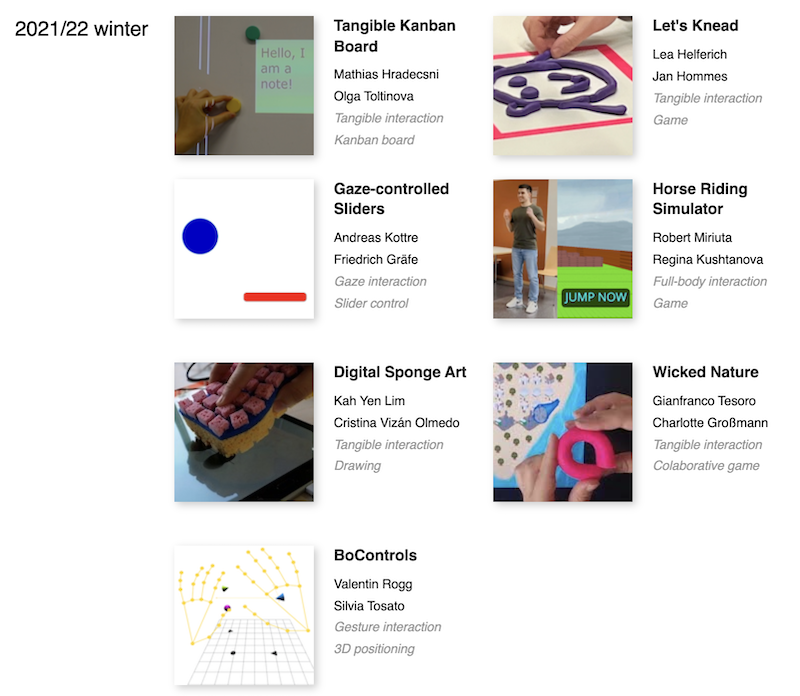Last winter, my course Interaction Engineering was conducted on campus for the first part (autumn 2021) which really helped connecting the students. In November we had to switch to virtual meetings via Zoom but at this point most students already had a good idea what project to pursue with which partner.
This year we had a large variety of interaction modalities, from tangible interaction, via gaze and gesture control to full-body interaction. All projects resulted in actual prototypes that were presented live on 2 Feb 2022.
Click on the following screen shot to get to our project page where you can browse all projects. Each project comes with a short video, a written report and a set of slides.
